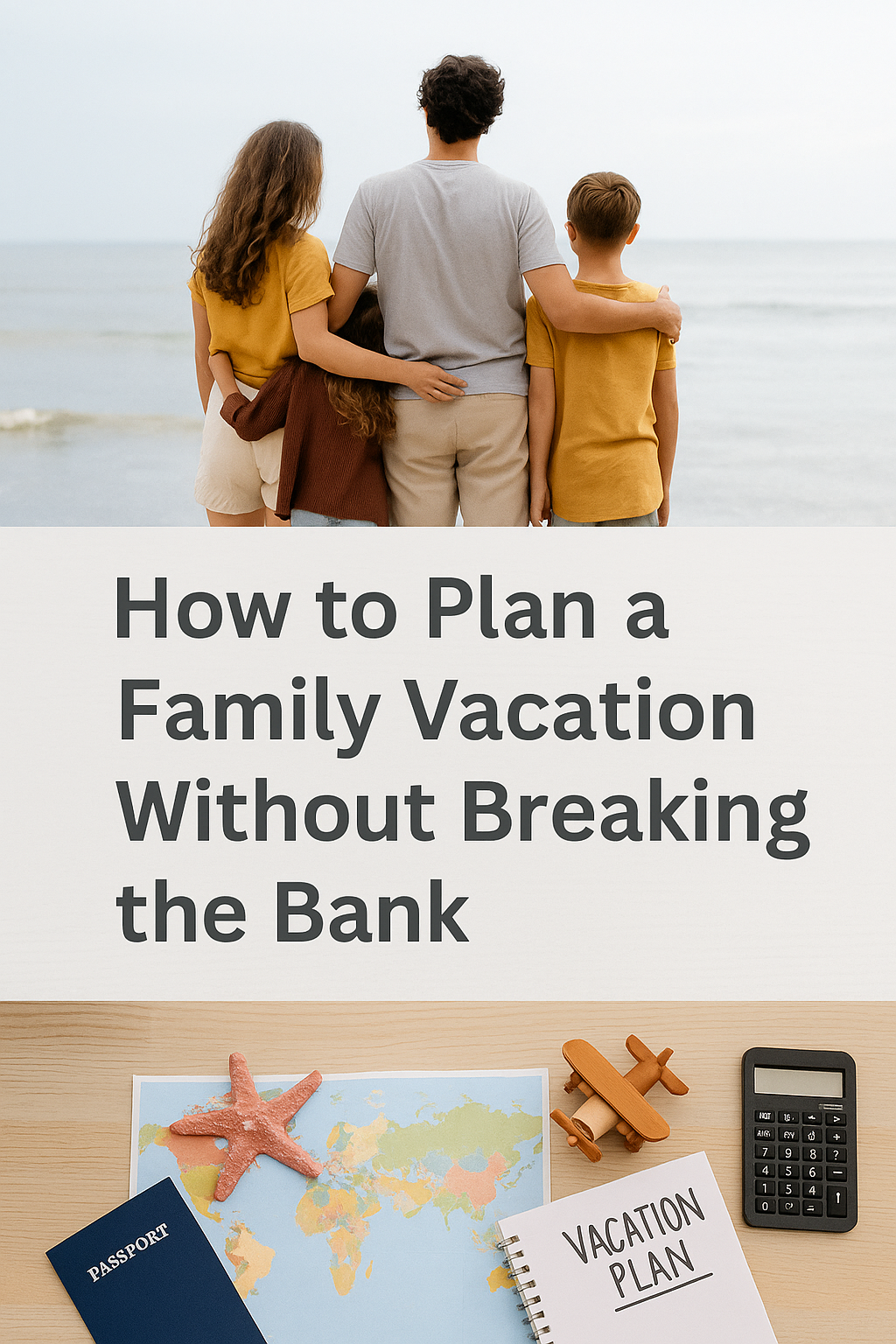Yes, You Can Travel as a Family Without Overspending
Family vacations are about more than just travel — they’re about creating shared memories, bonding time, and a well-deserved break from everyday life. But they can also come with a big price tag, especially when you’re budgeting for more than one person.
The good news is that with the right strategies, you can plan an unforgettable vacation that fits your budget. Whether it’s a road trip, a beach getaway, or exploring a new city, you don’t need to spend a fortune to relax and reconnect as a family.
Here’s how to plan a fun, affordable family vacation from start to finish.
Set a Realistic Budget Before Choosing a Destination
The biggest mistake families make is choosing a destination first, then trying to force a budget around it. Instead, flip the process.
Start by asking: how much can we comfortably spend?
Consider:
- Travel and transportation
- Accommodation
- Meals and snacks
- Activities and attractions
- Souvenirs and extras
- Emergency or “just in case” buffer
Decide how much you want to spend in total, then break it down by category. This gives you a clear structure when you start planning.
Tip: Use past vacations as a reference, and look at your monthly savings to decide what’s realistic.
Travel During the Off-Season
Timing matters. Traveling during school breaks or major holidays often means higher prices. If you can be flexible, consider:
- Shoulder seasons (early spring, late fall)
- Mid-week travel instead of weekends
- Off-peak destinations with fewer crowds
Off-season travel usually means lower rates on hotels, flights, and attractions — and it often feels more relaxed.
If your kids are in school, even extending a long weekend by one or two days can help you find better deals.
Be Flexible With the Destination
You don’t always need to fly across the country or go abroad for a great vacation. Focus on the experience, not the location.
Ideas for budget-friendly family trips:
- National parks or nature reserves
- Road trips to nearby towns or beaches
- Visiting family or friends in other cities
- Staycations with local activities you’ve never tried
Use tools like Google Flights or Skyscanner to search for the cheapest destinations from your city. Let the deals guide your destination.
Use Reward Points or Cashback When Possible
If you have a travel rewards credit card or cashback program, this is the time to put it to good use.
Check for:
- Airline miles or hotel points
- Credit card cashback for travel expenses
- Travel partner discounts (from your bank, work, or memberships)
Even if you don’t have rewards now, some cards offer a sign-up bonus that can cover a few hotel nights or flights.
Just be sure to use credit cards responsibly and only spend what you’ve already budgeted for.
Book Accommodation with a Kitchen
Eating out every meal is one of the fastest ways to blow your vacation budget.
Consider booking:
- Vacation rentals (Airbnb, Vrbo)
- Hotels with kitchenettes
- Family-friendly hostels with shared kitchens
Being able to make breakfast, pack snacks, or cook a few meals can cut your food costs in half. You don’t have to cook every night — just reducing one meal per day makes a big difference.
Bonus: Kids often eat better with familiar food from home, and you reduce the stress of finding family-friendly restaurants.
Plan (and Limit) Paid Activities
It’s easy to get caught up in the excitement of attractions, tours, and theme parks. But paid activities add up fast.
To keep things fun and affordable:
- Choose 1 or 2 big paid activities
- Mix in lots of free or low-cost experiences
- Look for city passes or combo tickets for attractions
- Check local events calendars for free festivals or markets
Balance is key. Kids don’t need constant entertainment — sometimes the best memories come from a walk on the beach or a family picnic.
Pack Smart to Avoid Extra Costs
Planning ahead can help you avoid last-minute purchases.
Before you go, make a list and include:
- Reusable water bottles
- Snacks for the road or flight
- Chargers, power banks, and headphones
- Sunscreen, hats, bug spray, and other essentials
- Medicine and first aid supplies
Buying these at home is much cheaper than picking them up at tourist spots.
If you’re flying, make sure your luggage fits the airline’s limits to avoid excess baggage fees.
Use a Daily Spending Limit
One great way to stay on track is to divide your total budget by the number of vacation days.
Example: If your food and activities budget is $600 for a 5-day trip, you get $120 per day.
This helps you manage daily choices and avoid the shock of overspending when you get home. If you go under budget one day, you can roll it over to the next.
Use a simple notepad, app, or envelope system to track spending daily.
Include the Kids in Planning
Involving your children in vacation planning can help set expectations and make the experience more meaningful.
Ideas:
- Let them pick one activity or outing
- Give them a souvenir allowance
- Have them help research places to visit
- Teach them how to track spending or save in advance
This teaches responsibility and helps them value the effort behind planning a trip.
Final Thought: A Great Vacation Isn’t About How Much You Spend
You don’t need luxury resorts or expensive flights to have a memorable family vacation. With thoughtful planning, creativity, and a clear budget, your family can enjoy quality time together without financial stress.
Start with what you can afford, find joy in the journey, and remember that the best parts of any trip often come from shared laughter, surprises, and the moments you didn’t plan.
